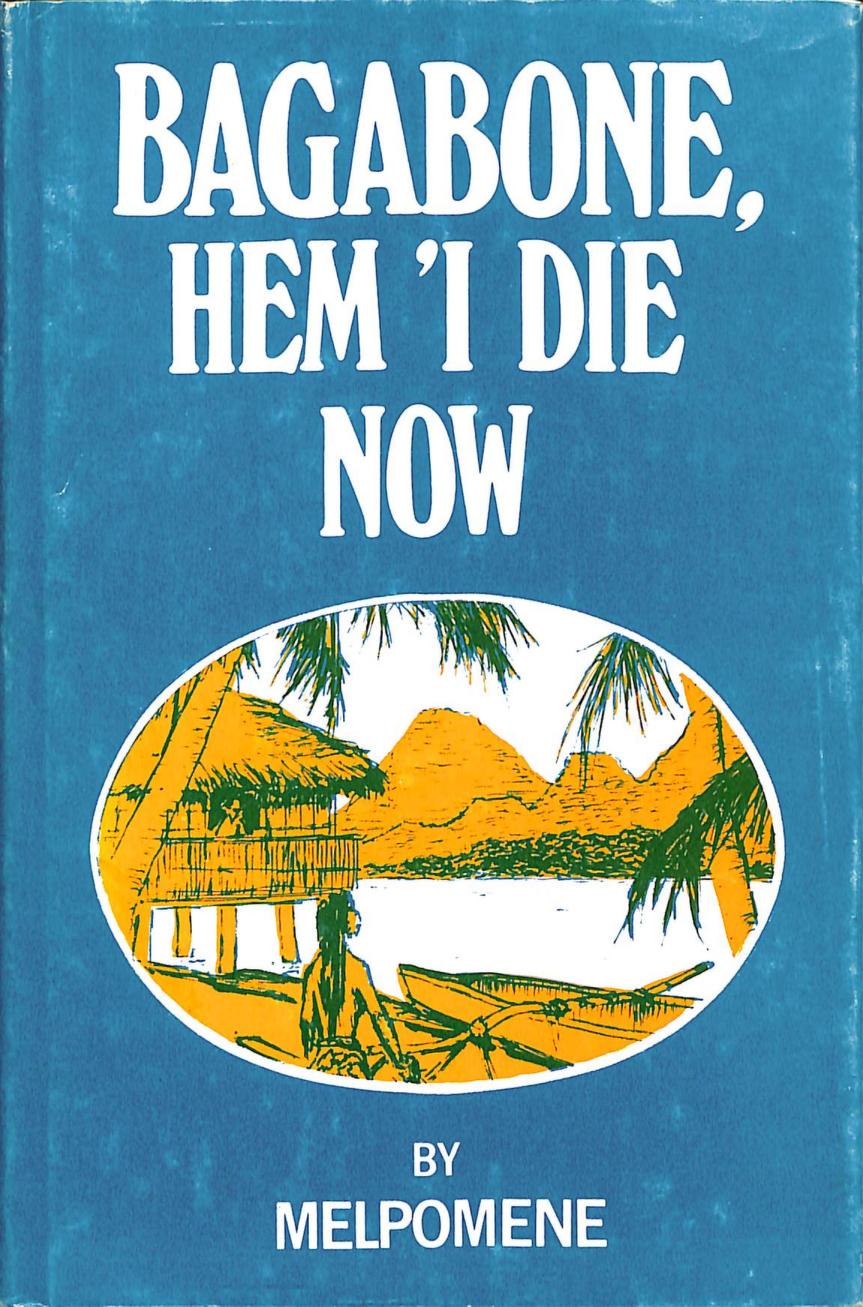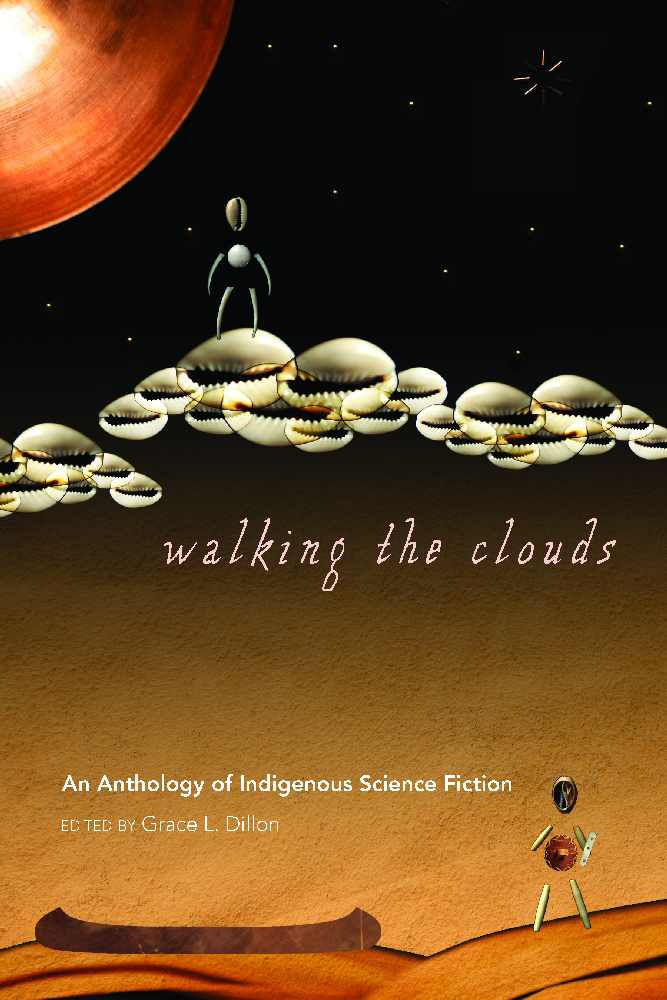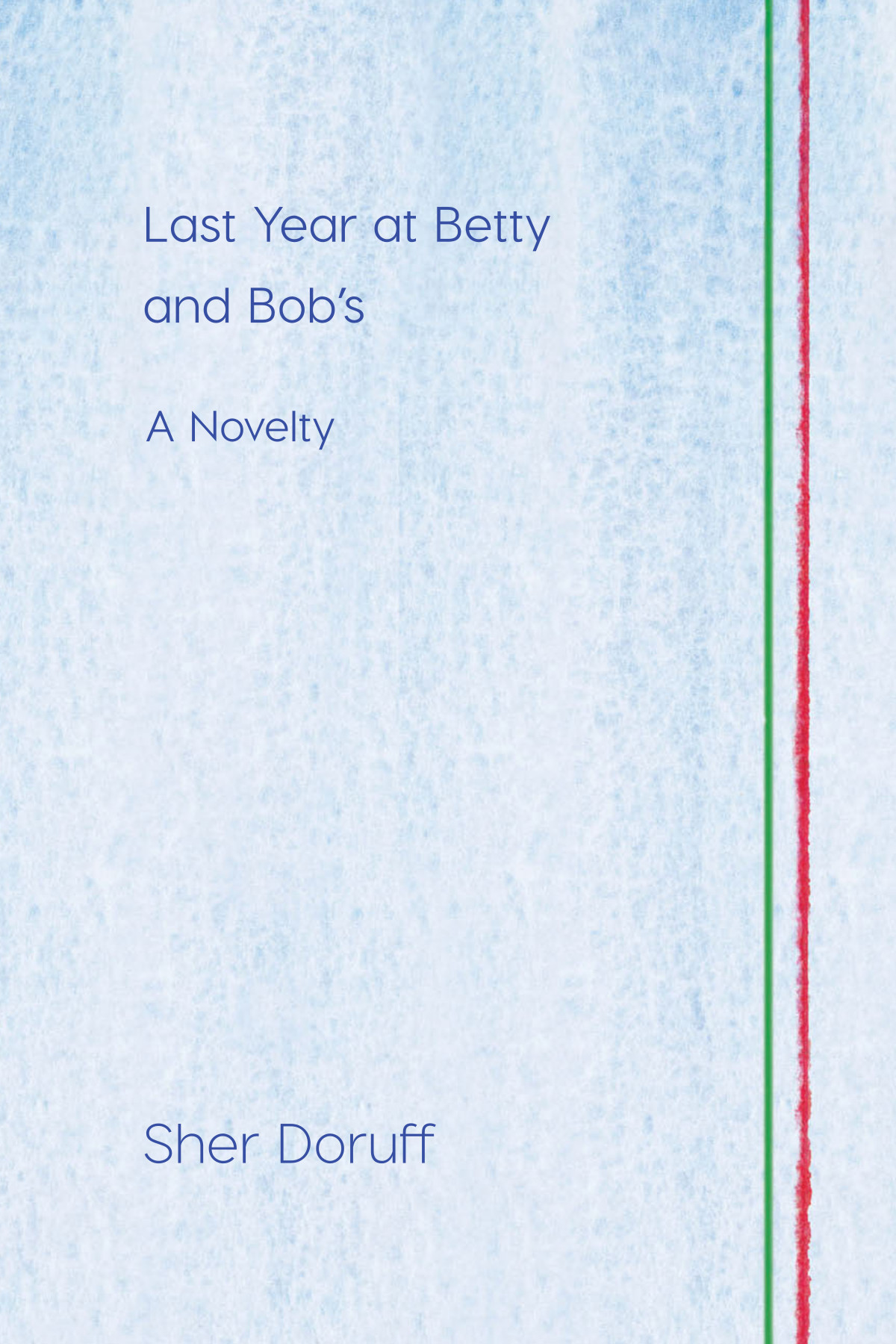Melpomene: Bagabone, Hem ‘I Die Now (1980)
Filed under fiction | Tags: · artificial intelligence, generativity, hoax, language, linguistics, literature, text

“Bagabone, Hem ‘I Die Now (1980) is perhaps the first novel that was purportedly written by a computer.
The back flap of the dust jacket states this about the book’s origins: “Can a computer write a novel? To find out, some experts in literature, linguistics, and computers at the Institute of Science and Technology, Jagiellonian University, Krakow, programed a computer, Melpomene, with English verb patterns and semantic (i.e., meaning) units drawn from twentieth-century women writers, as well as D.H. Lawrence, James Joyce, and some ‘angry young men’ of the 1960s. Then they added some patterns and units from Pidgin English and French, and the astounding result is Bagabone, Hem ‘I Die Now. Melpomene, which is the name of the Greek muse of tragedy, picked the title; translated from Pidgin English, it means, ‘Bagabone (a character in the novel) is dying.'”
Following its publication, Computer World published an article (“Publisher Claims Computer Composed Novel”, 25 Aug. 1980, p. 23) effectively defeating the publisher’s claim about the work’s computational origins. In the article, AI experts deem the novel to be human-written, and another source reports that there is no ‘Institute of Science and Technology’ at Jagiellonian University. Moreover, due to its mode of operation, the publisher (Vantage Press) would apparently have been paid to print the book. The copyright holder for Bagabone was a human—an Englishman named G.E. Hughes—who could not be reached by Computer World. (Intriguingly, this copy of the book is inscribed by one ‘Eric Hughes’, though this could be coincidental.)”
Publisher Vantage Press, New York, 1980
ISBN 0533042496, 9780533042494
136 pages
via James Ryan (xfoml)
Commentary: Peter Swirski (2013), James Ryan (2017), Joanna J Bryson (2018).
PDF (40 MB)
Internet Archive
Grace L. Dillon (ed.): Walking the Clouds: An Anthology of Indigenous Science Fiction (2012)
Filed under book, fiction | Tags: · indigenous futurisms, indigenous peoples, science fiction

“In this first-ever anthology of Indigenous science fiction Grace Dillon collects some of the finest examples of the craft with contributions by Native American, First Nations, Aboriginal Australian, and New Zealand Maori authors. The collection includes seminal authors such as Gerald Vizenor, historically important contributions often categorized as “magical realism” by authors like Leslie Marmon Silko and Sherman Alexie, and authors more recognizable to science fiction fans like William Sanders and Stephen Graham Jones. Dillon’s engaging introduction situates the pieces in the larger context of science fiction and its conventions.
Organized by sub-genre, the book starts with Native slipstream, stories infused with time travel, alternate realities and alternative history like Vizenor’s “Custer on the Slipstream.” Next up are stories about contact with other beings featuring, among others, an excerpt from Gerry William’s The Black Ship. Dillon includes stories that highlight Indigenous science like a piece from Archie Weller’s Land of the Golden Clouds, asserting that one of the roles of Native science fiction is to disentangle that science from notions of “primitive” knowledge and myth. The fourth section calls out stories of apocalypse like William Sanders’ “When This World Is All on Fire” and a piece from Zainab Amadahy’s The Moons of Palmares. The anthology closes with examples of biskaabiiyang, or “returning to ourselves,” bringing together stories like Eden Robinson’s “Terminal Avenue” and a piece from Robert Sullivan’s Star Waka.
An essential book for readers and students of both Native literature and science fiction, Walking the Clouds is an invaluable collection. It brings together not only great examples of Native science fiction from an internationally-known cast of authors, but Dillon’s insightful scholarship sheds new light on the traditions of imagining an Indigenous future.”
Publisher University of Arizona Press, Tucson, 2012
Sun Tracks series, 69
ISBN 9780816529827, 0816529825
vii+260 pages
via Gioni
Reviews: Lindsey Catherine Cornum (Full Stop, 2012), Ileana Cerda (Southwestern American Literature, 2013), Amy Gore (Studies in American Indian Literatures, 2013).
PDF (21 MB, updated on 2021-6-25)
Comments (5)Sher Doruff: Last Year at Betty and Bob’s: A Novelty (2017)
Filed under fiction | Tags: · artistic research

“Last Year at Betty and Bob’s: A Novelty is the first in a series of novellas emerging from a writing practice that taps the cusp of consciousness between dreaming and waking. A storyline, or genealogy, tinted a shade of RGB blue, is fashioned by thinking through the felt unthought of this between space. A fabulation, an anarchive of what passes through. Lucid dreaming of this type is rife with allusions to conceptual and material goings-on, manifesting in awkward imaginaries. The dream personas are rendered as complex character amalgams with nomadic ages, sexes, genders and phenotypes. Occurrences of lived ‘fact’ elide with a hallucinatory real as speculation.
In A Novelty, Bette B, an ageing quasi-academic artist researcher, and BØB, attuned urban rodent, are palindromic variants of a generic cast of Betty’s and Bob’s. The happenstance of their meeting on the super slick POMOC affects a trans-special contagion. These are the fact of the matter. The matters that come to concern both B’s are more slippery and elusive.”
Publisher Open Humanities Press, London, 2017
Immediations series
Creative Commons BY-SA 4.0 License
ISBN 1785420461, 9781785420467
136 pages
See also the second novella in the series, Last Year at Betty and Bob’s: An Adventure, 3Ecologies/Punctum Books, 2018 (13 MB, added on 2018-12-22).
Comment (0)
